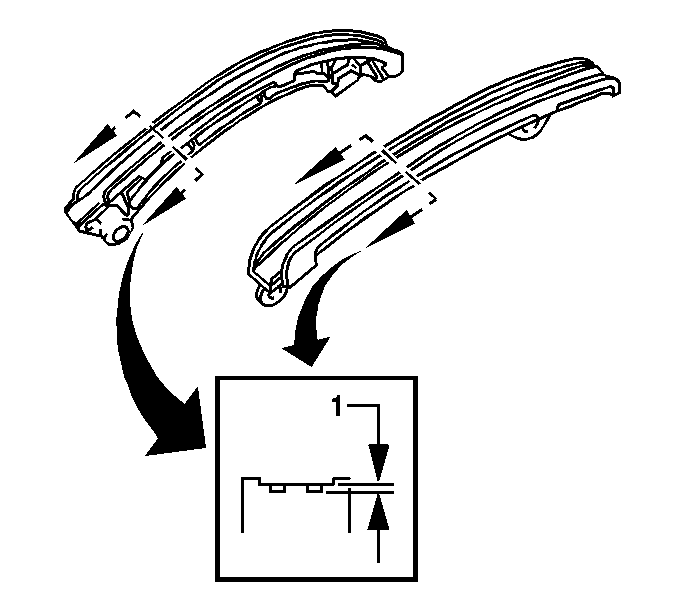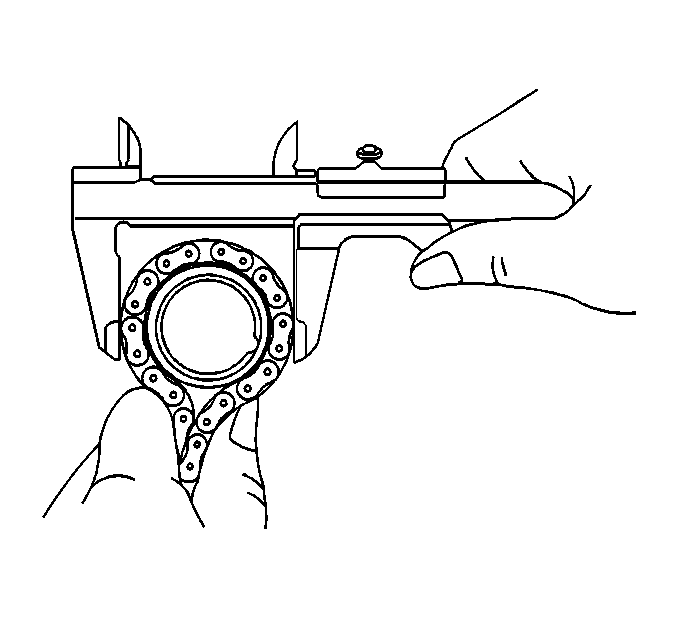For 1990-2009 cars only
- Inspect the timing chain guides for cracking or wear.
- Replace the timing chain guides if wear exceeds 1.0 mm (0.039 in) (1).
- Inspect the timing chain for elongation wear.
- Use a Vernier caliper and measure the length of 16 links with the timing chain fully stretched (1). Refer to Engine Mechanical Specifications .
- If the elongation is greater than maximum, replace the timing chain.
- Inspect the camshaft and sprocket faces for signs of movement.
- Inspect the camshaft and crankshaft sprocket teeth and chain for signs of chipping or seizure of the timing chain links.
- Inspect the timing chain and timing sprockets for wear.
- Wrap the timing chain around each sprocket.
- Use a Vernier caliper to measure the timing sprocket diameter with the chain. Refer to Engine Mechanical Specifications .
- If the diameter of any of the sprockets measured is less than the minimum, replace the timing chain and sprockets.
- Install the CMP actuator to the intake camshaft.
- Ensure that the CMP actuator will not turn.
- Apply air pressure of approximately 100 kPa (14 psi) to the advance passage of the camshaft.
- Turn the CMP actuator to the advanced angle side by hand.
- Rotate the actuator back and forth through the advanced positions to ensure 21 degrees of movement.
- Remove the air pressure and turn the CMP actuator back to the minimum advanced angle position to lock it.
- Replace the CMP actuator if the following conditions exist:


Important: Make the measurements at three or more places of the timing chain at random.

Important: Vernier calipers must contact the chain rollers for measuring.
Notice: Refer to Fastener Notice in the Preface section.

Tighten
Tighten the CMP actuator bolt to 54 N·m (40 lb ft).
| • | CMP actuator does not lock with air pressure removed. |
| • | CMP actuator does not unlock with air pressure applied. |
| • | CMP actuator does not rotate smoothly through the advanced positions. |
| • | CMP actuator does not rotate completely through the advance positions. |
